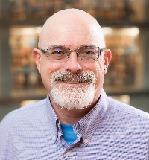Dan Noonan is Associate Professor/Digital Preservation Librarian at The Ohio State University and the Coordinating Committee Chair at NDSA.
This year as we celebrate World Digital Preservation Day, we contemplate how we can break down barriers to enable success, not just for ourselves and our personal institutions and organizations, but for the greater global community. Digital preservation is not a state that is achieved; rather it is a comprehensive set of managed activities that are necessary to provide continued access to digital objects, beyond the limits of media failure or technological change. These managed activities do not happen within one division, department or unit of an institution or organization, nor do they necessarily happen solely within one particular entity. Therefore, it is appropriate to consider the framework for this collective work as an ethos, which is described as the characteristic spirit of a people, community, culture, or organization as manifested in its attitudes and aspirations.
At its core, NDSA serves as a community to facilitate and enable a digital preservation ethos. Born of the National Digital Information Infrastructure & Preservation Program (NDIIP) of the United States’ Library of Congress, the National Digital Stewardship Alliance has been an active member of the greater digital preservation community for more than a decade. Over the past few years, NDSA has worked diligently to more formalize its ethos and structure, establishing governance parameters, consolidating and improving communications and documentation, and creating cyclical expectations for the Levels of Digital Preservation, NDSA Agenda, surveys and reports.
This year NDSA leadership began to actively contemplate what it means to be a member of NDSA. One aspect of this contemplation is our name itself; while NDSA was an abbreviation or initialization of the National Digital Stewardship Alliance, it is now what we refer to ourselves as, leaving the mouthful of words behind. However, this is more intentional than just leaving a mouthful of words behind; as NDSA has grown, there has been increasing international membership and participation. In fact, one of our newest elected members of the Coordinating Committee, is a representative an international organization. Therefore, does the label “national” really apply any longer?
More importantly, often there are engaged individuals who would like to become a member, but for one reason or another their institution chooses not to become a member. Granted there is no prohibition limiting non-members participation in Interest Groups, Working Groups or attending the annual DigiPres conference; but how can we remove a barrier for them, and better accommodate and honor their commitment and contributions to creating a better digital preservation community and ethos?
To address what it means to be a member of NDSA, who we are, and our evolving scope and role within the global digital preservation ecosystem, the leadership established a task force earlier this year. The Membership and Engagement Task Force seeks to better understand the profile of NDSA members and member engagement; determine how to better support NDSA members, strengthen recruitment and review and strategize member benefits; and identify resources of interest to our members. The work of the Task Force was underway as of the submission of this blog entry, but their results and recommendations had not yet been presented to NDSA’s leadership.
However, it is important to acknowledge this type of self-reflective activity NDSA is currently engaged in. If we are an organization that embraces the concept of an ethos, which I believe we are, we have to understand that characteristic spirit, as manifested in the attitudes and aspirations of our organization, our members, those who would like to be members, as well as the greater digital preservation community and culture. Further, we need to break down and remove barriers to embracing the ethos and participating in the community, to best enable an understanding of digital preservation and a culture to support those efforts.
